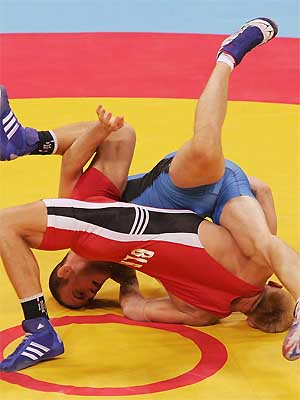
Throughout my years as a powerlifter and strength coach, I’ve been fortunate to have met and trained with some of the best lifters, coaches, and wrestlers in the country. Like most powerlifters first starting out, I started with the basic conjugate template my freshman year in college back in 2002. I tried everything—different bars and angles, bands, chains, and more. I was constantly changing and constantly pushing.
While I think the conjugate template and the principles used to construct it are paramount to getting stronger (from what I know based on seminars and conversations with Dave Tate and Jim Wendler and from what I’ve read on the internet), the one trap I initially fell into was prioritizing variety in my program over utilizing the variety in my program to improve my core lifts. I’m here to caution young lifters against haphazardly making changes to their programs without first thinking about how an exercise may or may not carry over to their core lifts.
Back in college, I had so many derivatives in my program that I hit more PRs than I took total credits. It was exciting to feel like I was constantly improving. The issue was that I often set PRs in certain derivative exercises, but I didn’t set PRs in my core lifts. The bottom line is that the progress I felt like I was making just didn’t carry over to where it really mattered.
The focus of a good strength and conditioning plan should be on increasing the qualities determined by the coach to be most important to performance of the sport. Identifying a few specific core lifts to use as a gauge for progress and centering your program on these identified core lifts/exercises allows you to best assess if the program is working and where to make the necessary changes if it isn’t working.
The core lifts I track with the wrestlers who I train are the safety squat bar box squat, bench press, deadlift, and weighted chin-up. Over the years, I’ve been able to whittle the long list of core exercise derivatives I’ve used with my wrestlers down to about three to four derivative exercises per core lift.
Here are the top derivatives I use consistently with my wrestlers and what I’ve found to be their approximate relationship with the core lifts:
Box squat
1. 2–3 inches above parallel box, 5 rep max (RM) should equal your 1RM on the parallel box squat
2. 2–3 inches above parallel box with light bands, 3RM
3. Parallel box with reverse monster bands, 2RM
Bench press
1. Reverse monster band, 5RM
2. Reverse mini bands, 3RM
3. Bench with two chains (25 total lbs), 20 lbs less than straight weight 1RM
4. Reverse micro band, 20 lbs more than straight weight 1RM
Deadlift
1. Trap Bar, 4–5RM
2. #2 pin pull, 3RM
3. Reverse monster band from four holes down, 2RM
Chin-up
Every wrestler I train is a little bit different here so I haven’t been able to put together a system that is as predictable as the systems I have implemented for the other three lifts. I mix different grips—chin-up, neutral grip, and Jiu Jistu double weave gi for anywhere from 3–5 reps usually. Recently, I’ve been using a reverse light band for the chin-up and derivatives. I like the extra support at the bottom, which allows my wrestlers to complete reps with supra maximal weight from 90 degrees in the elbow to the top. In addition, in most cases, it forces my wrestlers to perform the exercise without kicking to complete a rep. (If they kick, the band will come off their knee and slap them in the face—a great system of checks and balances!)
This list obviously isn’t the be-all, end-all, but it provides variety while maintaining the ability to measure results using the core lifts as the gauge. What I've found to be great about this particular list is that in each category—with the exception of the chin-up—exercises exist with different rep maxes that should be within a few pounds of a 1RM on the core lift. This allows me to better block up training. I can either do 3–4 weeks of 5RM followed by 3–4 weeks of 3RM followed by 3–4 weeks of 1RM or I can do something more along the lines of DeFranco’s template, which involves doing a 5/3/1 over the course of three weeks and rotating the exercises every week with a derivative that corresponds to that rep max goal for the week.
All too often, I see and hear about strength coaches coming up with new and flashy ways to perform exercises. I’m all for innovation in the industry, but there is a big difference between making changes for the sake of making changes and making changes for the sake of improvement based on measurable results. For example, when I notice a particular area that one of the wrestlers I train needs to improve on, sometimes an extra derivative is needed. In these situations, I will often add in other derivatives that will target that wrestler’s particular weakness in addition to the list above. I will also cycle in new derivatives that I have read about or experimented with in my own training if it fits in with the program and will contribute to the wrestler accomplishing the main goal of the program, which is to increase on the four core lifts.
To sum things up, knowing the interrelationship that exists between all of your exercises and knowing the transferability of the exercises selected to the goals of your program should be the primary focus when selecting derivative exercises in a strength and conditioning program.









